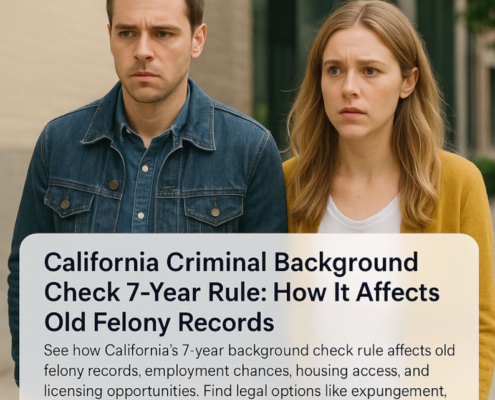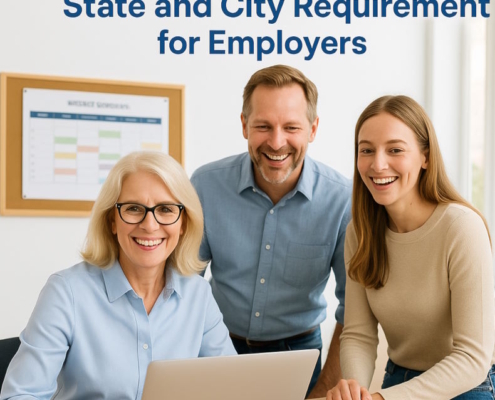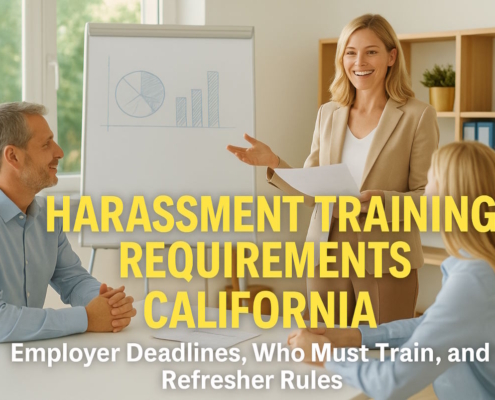Letter of Recommendation Samples & Templates
A recommendation letter is a brief recount of your experience and vouches for the capabilities, character traits, and overall quality of the person being recommended.
By Brad Nakase, Attorney
Email | Call (800) 484-4610
In this article, our employer defense attorney discusses how to write a letter of recommendation and provide template of samples as follows:
What is an employee letter of recommendation?
A letter of recommendation for an employee is a document written by someone who has worked closely with the employee and is familiar with their skills, qualifications, and work performance. The purpose of such a letter is to provide a positive assessment and endorsement of the employee’s abilities, character, and suitability for a particular job or opportunity. Let’s review some of the key aspects of a recommendation letter for an employee:
- Validation of Skills and Qualifications
The recommendation letter highlights the employee’s specific skills, qualifications, and expertise relevant to the position they are seeking or the opportunity they are pursuing. It may discuss their educational background, professional training, certifications, or any specialized knowledge that makes them suitable for the role.
- Evaluation of Work Performance
The recommendation letter assesses the employee’s work performance based on the writer’s personal observations and experiences. It may discuss the employee’s strengths, areas of expertise, notable achievements, and how they have contributed to the success of previous projects or teams.
A letter of recommendation often comments on the employee’s character traits, work ethic, reliability, integrity, and interpersonal skills. It provides insight into their ability to collaborate with others, handle challenges, and maintain professionalism in the workplace. In some cases, the letter may compare the employee to their peers or provide context about their performance relative to others. This can help the recipient of the letter understand the employee’s standing and performance within their previous work environment.
Ultimately, the recommendation letter serves as an endorsement and recommendation for the employee. It expresses confidence in their abilities and recommends them as a valuable candidate for the job or opportunity they are pursuing. This recommendation can carry weight and influence the recipient’s decision-making process.
It is important to note that a letter of recommendation should be honest, accurate, and tailored to the specific needs or requirements of the position or opportunity. It should provide valuable insights into the employee’s capabilities and help the recipient make an informed decision. At the end of each sections, you can download a letter of recommendation template.
What role does Human Resources (HR) play in giving recommendation letters or recommendation?
Human Resources (HR) typically plays a significant role in the process of furnishing letters of recommendation. Their involvement can vary depending on the organization’s policies and procedures.
HR will establish the policies and guidelines concerning letters of recommendation within the organization. They define the process, criteria, and standards for requesting, drafting, and providing letters of recommendation to ensure consistency and fairness.
HR may also be responsible for initiating the request for letters of recommendation on behalf of employees. This can occur when an employee is transitioning to a new role within the company or leaving the organization. HR communicates the requirements and timeline to the relevant parties involved.
HR collects the letters of recommendation submitted by employees or provided by managers or colleagues. They maintain a record of these documents as part of the employee’s personnel file or in a centralized database for future reference. They will also ensure that letters of recommendation adhere to legal and ethical guidelines. They may review the content of the letters to ensure they are not discriminatory, contain accurate information, and do not violate any confidentiality agreements or policies.
In some cases, Human Resources may verify the authenticity of letters of recommendation by contacting the individuals who wrote them to confirm their authorship and content. HR may also conduct background checks or reference checks to validate the claims made in the recommendation letters.
Human Resources offers guidance and support to managers and employees who are involved in the process of writing or requesting letters of recommendation. They may offer templates, best practices, or advice on how to draft effective and appropriate recommendation letters.
HR ensures that the information shared in letters of recommendation is handled confidentially and in compliance with data protection regulations. They safeguard the privacy of the employees and ensure that access to these documents is restricted to authorized personnel.
It is important to understand that the level of HR involvement can vary depending on the organization’s size, structure, and specific practices. Some smaller companies may have less formal HR processes, while larger organizations may have dedicated HR personnel responsible for managing the entire process of letters of recommendation.
What are different kinds of employee letters of recommendation?
A letter of recommendation typically contains several key elements that provide a comprehensive and insightful assessment of the employee. While the specific content in a recommendation letter may vary, the following are the essential elements commonly found in a letter of recommendation:
- Salutation: The recommendation letter begins with a formal salutation addressing the recipient.
- Introduction and Context: The writer introduces themselves and their relationship to the employee, including how long they have known each other and in what capacity (ex: supervisor, coworker, professor). They may also provide context about the employee’s role, department, or specific projects they have worked on together.
- Statement of Purpose: The writer clearly states the purpose of the recommendation letter, indicating that they are providing a recommendation for the employee and the specific opportunity or position the employee is pursuing.
- Description of the Relationship: The writer elaborates on the nature of the relationship with the employee, highlighting the context and duration of their interactions. This helps establish the writer’s credibility and their ability to evaluate the employee’s performance.
- Evaluation of Skills and Qualifications: The recommendation letter assesses the employee’s skills, qualifications, and expertise relevant to the position or opportunity. The writer may discuss the employee’s technical skills, industry knowledge, educational background, certifications, or any other qualifications that make them suitable for the role.
- Assessment of Work Performance: The writer provides an evaluation of the employee’s work performance based on their personal observations and experiences. They highlight the employee’s strengths, notable achievements, and areas where they excel. They might discuss specific projects, tasks, or responsibilities the employee successfully handled and the impact they made.
- Description of Personal Traits and Professionalism: The writer comments on the employee’s character traits, work ethic, interpersonal skills, and overall professionalism. They may mention qualities such as reliability, integrity, adaptability, communication skills, teamwork, leadership potential, and problem-solving abilities.
- Examples and Specific Instances: The writer includes specific examples, anecdotes, or instances that illustrate the employee’s skills, performance, or character. These concrete examples add depth and credibility to the recommendation.
- Comparison and Context: In some cases, the writer may compare the employee to their peers or provide context about their performance relative to others. This can help the recipient of the recommendation letter understand the employee’s standing and performance within their previous work environment.
- Conclusion and Recommendation: The recommendation letter concludes with a strong endorsement and recommendation for the employee. The writer expresses confidence in the employee’s abilities, suitability for the opportunity, and their potential for future success.
- Contact Information: The writer includes their contact information (name, job title, email, and phone number) in case the recipient has further questions or requires additional information.
Importantly, the specific content and length of a letter of recommendation may vary depending on the organization’s requirements, the relationship between the writer and the employee, and the purpose of the letter.
How to use a recommendation letter template to write a letter
When using a template to write a letter of recommendation, it is important to keep certain factors in mind to ensure the recommendation letter is effective, honest, flexible, fleshed out, and focused. At the end of this section you will find and download a letter of recommendation template. The following is a step-by-step guide to help you navigate the process:
- Understand the Purpose: Familiarize yourself with the purpose of the recommendation letter and the specific opportunity or position the employee is seeking. This understanding will guide your writing and ensure that you focus on relevant skills and qualifications.
- Use a Reliable Template: Start with a reliable template as a foundation for your recommendation letter. Templates can provide a structured format and help you organize your thoughts. Choose a template that aligns with the purpose and tone you want to convey.
- Be Honest: Integrity is crucial in a recommendation letter. Provide an accurate assessment of the employee’s abilities, skills, and performance. Highlight their strengths but also be truthful about areas where they may need improvement. Dishonest or exaggerated claims can harm both the employee and your own credibility.
- Be Flexible: While templates provide structure, don’t restrict yourself too much. Adapt the template to reflect your personal experiences and insights about the employee. Customize the content to highlight the employee’s unique qualities, accomplishments, and skills that are relevant to the opportunity.
- Flesh It Out with Specific Examples: To make the letter more compelling and credible, include specific examples and anecdotes that illustrate the employee’s performance and abilities. These examples should demonstrate how the employee has contributed to projects, handled challenges, or exhibited positive traits in the workplace.
- Be Focused and Relevant: Keep the letter focused on the employee’s qualifications and suitability for the opportunity. Avoid irrelevant details or excessive tangents. Stay on track by referring back to the purpose of the recommendation and the requirements of the opportunity. Use concise language and prioritize the most important information.
- Provide a Balanced Perspective: While it is crucial to highlight the employee’s strengths, ensure your recommendation letter provides a balanced perspective. Mention areas where the employee can grow or improve, but frame them constructively and positively. This demonstrates your fairness and credibility as a recommender.
- Proofread and Edit: Before finishing the letter, read it over carefully to correct any grammatical or typographical errors. Review the content for clarity and coherence. Edit where necessary to improve the flow and readability of the letter.
- Maintain Professional Tone: Maintain a professional tone throughout the recommendation letter. Use formal language and avoid slang or colloquialisms. Keep the tone positive and supportive, emphasizing the employee’s value and potential.
- Seek Feedback, if Possible: If you have the opportunity, seek feedback from other colleagues or supervisors who have worked with the employee. They may provide additional insights or suggestions that can enhance the letter’s content.
Remember, the goal of a letter of recommendation is to provide an honest, well-rounded assessment of the employee’s qualifications and potential. Tailoring a template to reflect your personal experiences and insights will help create a more impactful and authentic letter.
What is a simple letter of recommendation? [Sample Letter of Recommendation]
A simple letter of recommendation is a document that provides a basic endorsement or reference for an individual in more informal settings. As opposed to a comprehensive recommendation letter, a simple letter of recommendation is typically shorter in length and does not require an in-depth assessment of the individual’s performance or qualifications. It may be used in situations where a formal, detailed recommendation may not be necessary or appropriate. A recommendation letter template for download is at the end of this section.
The following are some key characteristics of a simple letter of recommendation:
- Informal Setting: Simple letters of recommendation are often used in casual or personal settings, such as recommendations for friends, family members, or acquaintances. They may be used for various purposes, such as supporting an application for a volunteer position, vouching for someone’s character, or assisting with personal endeavors.
- Concise Format: Simple recommendation letters are usually brief and to the point. They focus on the essential information and skip detailed assessments or extensive explanations. The emphasis is on conveying a positive impression of the individual without going into extensive, long-winded analysis.
- Basic Endorsement: Rather than providing a comprehensive evaluation of the individual’s performance or skills, a simple letter of recommendation offers a basic endorsement. It may highlight the person’s positive qualities, such as their character traits, integrity, reliability, or helpfulness.
- Personal Relationship: Simple recommendation letters often rely on the writer’s personal relationship with the individual rather than a professional association. The writer may have observed the individual’s qualities in various non-professional settings, such as social interactions, community involvement, or personal experiences.
- Flexibility: Simple recommendation letters offer flexibility in terms of content and structure. They can be tailored to the specific needs or requirements of the situation. The letter may be adapted to emphasize particular qualities or highlight relevant experiences that are pertinent to the purpose of the recommendation.
- Supportive Reference: In some cases, a simple letter of recommendation may be used for an individual who did not perform well in a previous position or faced challenges. Despite their shortcomings, the letter can focus on their redeeming qualities, personal growth, or positive aspects that can still be highlighted.
While a simple letter of recommendation may not carry the same weight as a comprehensive and detailed letter, it can still serve as a valuable reference in informal or non-professional settings. It can offer a supportive perspective on the individual’s character and may be used when a more extensive evaluation is not required or appropriate. We have provided a letter of recommendation sample.
How to make a letter of recommendation effective
Use a professional format
To give a letter of recommendation a professional format, follow these guidelines:
- Maintain a formal and business-like tone throughout the letter. Address the recipient with a proper salutation, such as “Dear [Recipient’s Name]”.
- Choose a professional and easy-to-read font, such as Arial, Times New Roman, or Calibri. Use a font size between 10 and 12 points for optimal readability.
- If you are writing the recommendation letter on behalf of an organization, consider using a letterhead that includes the organization’s name, logo, and contact information. This adds a professional touch to the letter.
- Include your full name, job title, company/organization name, phone number, and email address at the top or bottom of the letter. This allows the recipient to reach out to you for any further inquiries or verification.
- Include the date of writing the letter at the top, aligned with the left or right margin. Format the date in a consistent manner, such as “June 19, 2023”.
- Address the recipient appropriately, using their full name, job title, and company/organization name. For example, “Dear Mr. Alan Smith, Hiring Manager at ABC Company”.
- Start the letter with a brief introduction, explaining your relationship to the person you are recommending and the context in which you know them. State your position and any relevant affiliations.
- Structure the content of the letter in a logical manner. Use paragraphs or bullet points to clearly present different aspects of the individual’s qualifications, skills, and achievements. Consider using headings or subheadings to enhance readability, if appropriate.
- Support your statements and recommendations with specific examples, anecdotes, or measurable achievements. This adds credibility to your letter and helps the recipient understand the individual’s capabilities.
- Conclude the letter by summarizing your recommendation and expressing your confidence in the individual’s abilities. Sign off with a formal closing, like “Sincerely” or “Best regards”, to be followed by your name and signature.
- Before you finish, proofread the letter carefully for any spelling, grammar, or punctuation errors. Ensure the content is clear, concise, and well-structured. Consider having someone else review the letter for a fresh perspective.
Remember, a professional format enhances the credibility and impact of a letter of recommendation. By using an appropriate font, providing contact information, and paying attention to details, you can present a polished and professional letter that reflects positively on both the recommender and the individual being recommended.
Explain your qualifications
When writing a letter of recommendation, it is beneficial to provide your qualifications to lend credibility and establish your expertise in evaluating the individual being recommended. The following are a few reasons why including your qualifications is important in a recommendation letter:
- By sharing your qualifications, such as your professional background, experience, or relevant achievements, you establish yourself as a credible source of judgment. This helps the recipient of the recommendation letter understand that your opinion and assessment are based on your expertise and familiarity with evaluating individuals in a similar context.
- When the reader sees that the person writing the recommendation has relevant qualifications, it increases the perceived value of the recommendation. Your qualifications can strengthen the trustworthiness and validity of your assessment, making the recommendation letter more persuasive.
- Sharing your qualifications provides context for your evaluation of the individual’s skills, qualities, or performance. It allows the reader to understand the lens through which you are assessing the person and the basis on which you are making your recommendations.
- Including your qualifications allows the recipient of the recommendation letter to gauge the credibility of your assessment. They can consider your expertise, experience, or position to better evaluate the weight and relevance of your opinion.
- In situations where multiple recommendation letters are being considered, your qualifications can set your recommendation letter apart from others. If the recipient recognizes your credentials and knows your reputation in the field or industry, they may place greater value on your recommendation compared to others with less relevant qualifications.
- When the recipient knows that the person writing the recommendation letter has the necessary qualifications to evaluate the individual, they are more likely to have confidence in the recommendation. This can positively impact the recipient’s decision-making process.
While it’s important to share your qualifications in the recommendation letter, remember to strike a balance between showcasing your expertise and keeping the focus primarily on the individual being recommended. The primary purpose of the letter is to provide a strong endorsement for the person’s qualifications, skills, and potential for success. Your qualifications serve as a supporting element to reinforce the credibility of your recommendation.
Talk about the candidate’s skills and accomplishments
Describing a candidate’s skills, work habits, and accomplishments in a letter of recommendation is crucial for several reasons:
- By describing the candidate’s skills, you offer tangible evidence of their capabilities and expertise. It helps the recipient understand the specific areas in which the candidate excels and how they can contribute to a given role or opportunity.
- Highlighting the candidate’s skills and work habits allows you to align their qualifications with the requirements of the position or opportunity they are pursuing. It shows that they possess the necessary competencies and attributes needed to succeed in that particular context.
- Describing the candidate’s accomplishments adds credibility to your recommendation. By showcasing their achievements, you substantiate your claims about their abilities and provide concrete examples of their past successes.
- By highlighting the candidate’s unique skills, work habits, and accomplishments, you set them apart from others. This differentiation helps the recipient understand what makes the candidate exceptional and why they stand out among their peers.
- Describing the candidate’s skills, work habits, and accomplishments allows the recipient to form a holistic view of their abilities. It gives them a clear understanding of the candidate’s strengths, work style, and potential impact in a professional setting.
- The recipient of the recommendation letter often relies on the information provided to make informed decisions. Describing the candidate’s skills, work habits, and accomplishments equips the recipient with the necessary insights to evaluate the candidate’s fit for a specific role or opportunity.
- A well-documented description of the candidate’s skills, work habits, and accomplishments instills confidence in the recipient. It assures them that the candidate possesses the necessary qualifications and has a track record of success, leading to increased trust in your recommendation.
When describing the candidate’s skills, work habits, and accomplishments, it is important to be specific and provide relevant examples in the recommendation letter. Use concrete evidence, like specific projects they successfully completed, goals they achieved, or instances where their skills made a significant impact. This specificity adds depth and credibility to your recommendation and helps the recipient form a more accurate assessment of the candidate’s potential.
Provide anecdotes
Using anecdotes in a letter of recommendation is highly beneficial as they bring the candidate’s qualities and achievements to life through real-life stories and examples. Anecdotes are powerful because they provide specific instances where the candidate demonstrated their skills, work ethic, or character traits. By sharing these anecdotes, the reader gains insight into the candidate’s abilities and potential in a more engaging and memorable way.
Anecdotes help to paint a vivid picture of the candidate’s experiences and showcase how they have excelled in various situations. They provide concrete evidence of the candidate’s capabilities and serve as proof of their accomplishments. Moreover, anecdotes add a personal touch to the recommendation, allowing the reader to connect with the candidate on a deeper level.
By weaving anecdotes into the recommendation letter, you create a narrative that captures the candidate’s unique qualities and demonstrates how they have made a positive impact in their professional endeavors. This storytelling approach is persuasive and memorable, making the recommendation letter more compelling and effective in influencing the recipient’s perception of the candidate.
Provide a formal closing
To formally close a recommendation letter, it is important to choose an appropriate closing phrase that conveys professionalism, gratitude, and a sense of finality. One commonly used formal closing is “Sincerely.” This closing is straightforward, widely recognized, and maintains a professional tone. It signifies that the content of the letter has been expressed sincerely and genuinely.
Other suitable options include “Best regards” or “Yours faithfully.” These closings maintain a respectful and courteous tone, acknowledging the formal nature of the letter. Whichever closing phrase you choose, it is essential to follow it with your full name and, if applicable, your job title or affiliation. This allows the recipient to easily identify and contact you if they have any further questions or need additional information.
Ending the recommendation letter with a formal closing not only provides a polished finish but also reinforces the professional tone and credibility of your recommendation.
Proofread the letter
Proofreading a letter of recommendation is crucial for several reasons. First and foremost, it ensures that the letter is free from spelling, grammar, and punctuation errors. Errors in a recommendation letter can detract from its professionalism and diminish the credibility of the writer. By taking the time to thoroughly proofread, you demonstrate attention to detail and a commitment to presenting a polished and error-free document.
Additionally, proofreading helps to clarify the content and improve the overall coherence of the letter. It allows you to review sentence structure, word choice, and the flow of ideas. Through careful proofreading, you can identify any awkward phrasing, unclear statements, or ambiguous language that may confuse the reader. This gives you an opportunity to make necessary revisions, ensuring that the recommendations and statements are clear, concise, and effectively convey your intended message.
Proofreading also helps to maintain the professionalism and tone of the letter. It allows you to ensure that the language used is appropriate, respectful, and consistent throughout. By eliminating any typos or grammatical errors, you can enhance the readability and professionalism of the letter, reinforcing a positive impression of both yourself as the writer and the candidate being recommended.
Moreover, proofreading helps to avoid any inadvertent errors or inaccuracies that may arise during the writing process. It provides an opportunity to double-check factual information, including dates, names, job titles, and other details specific to the candidate’s qualifications or achievements. Ensuring the accuracy of these details is essential for the credibility of the letter and to avoid any potential misunderstandings or misrepresentations.
Are there legal risks in writing a letter of recommendation?
Writing a recommendation letter as an HR professional carries certain legal risks that should be carefully considered. Two significant risks are defamation and discrimination. Defamation refers to making false statements that harm someone’s reputation, while discrimination involves treating individuals unfairly based on protected characteristics such as race, gender, age, or disability.
To minimize legal risks when writing recommendation letters, HR professionals should adhere to the following practices. First, ensure that all statements made in the letter are accurate, factual, and supported by evidence. Avoid exaggerations or false claims that could potentially be interpreted as defamatory. Second, focus on job-related qualifications, skills, and achievements rather than personal characteristics or protected categories. Avoid making subjective judgments or subjective statements that could be perceived as discriminatory.
It is also advisable to follow a consistent process for collecting information and evaluating candidates. Establish clear criteria for recommending individuals, and apply those criteria uniformly across all applicants. Treat all individuals fairly and avoid favoritism or bias in the selection process.
To further minimize legal risks, maintain confidentiality and obtain the candidate’s consent before writing the recommendation letter. Respect the candidate’s privacy by only sharing relevant information and refraining from disclosing sensitive or personal details that are unrelated to their job performance.
Additionally, it can be beneficial to provide training and guidance to employees involved in writing recommendation letters. Educate them on legal considerations, the importance of fairness and objectivity, and the potential consequences of making inaccurate or discriminatory statements. Encourage employees to seek legal counsel or HR guidance when uncertain about the content or potential implications of a recommendation letter.
By being mindful of the legal risks associated with recommendation letters and implementing these risk-mitigation strategies, HR professionals can help protect themselves, the organization, and the individuals involved. Following these guidelines promotes fairness, accuracy, and compliance with relevant laws and regulations, reducing the likelihood of legal issues arising from recommendation letters.
How do you handle difficult or awkward situations?
When faced with a request for a recommendation letter that you do not want to provide, whether due to personal or performance reasons, it is essential to handle the situation with tact, honesty, and professionalism. Think about using the following approach when forming a response:
- Express Appreciation: Begin your response by expressing gratitude for the individual’s request. Acknowledge the trust they have placed in you and the importance of their pursuit.
- Consider the Reasons: Reflect on your reasons for not wanting to provide the recommendation. If it is due to personal reasons, you may simply state that you are unable to fulfill the request at this time. However, if it is performance-related, consider if your concerns are valid, fair, and objective. If they are, it might be appropriate to address the performance concerns in a constructive manner.
- Offer Alternatives: If you are unable or unwilling to provide the recommendation, suggest alternative options. For example, you could recommend they seek recommendations from other individuals who may be better suited to provide an assessment of their qualifications or performance.
- Be Honest: If the reason for declining is performance-related, you may choose to provide honest feedback, but do so in a constructive and professional manner. You do not want to say: “So-and-so was terrible at their job.” Rather, clearly explain that your recommendation might not be in their best interest due to specific concerns. However, exercise caution to maintain confidentiality and avoid making defamatory or harmful statements.
- Maintain Professionalism: Regardless of your reasons, always maintain a professional and respectful tone throughout your response. Avoid being dismissive or overly negative, and emphasize that your decision is based on your own circumstances or professional judgment.
- Offer Support: Despite not providing a recommendation, extend your willingness to support the individual in other ways, such as providing general career advice, guidance, or resources. This shows that you still value their professional growth and success, even if you cannot fulfill their specific request.
Remember, it is vital to balance your own boundaries and limitations with empathy and professionalism when responding to requests for recommendation letter you are unable or unwilling to provide. By handling the situation tactfully, you can maintain professional relationships while maintaining your integrity and authenticity.
Have a quick question? We answered nearly 2000 FAQs.
See all blogs: Business | Corporate | Employment
Most recent blogs:































